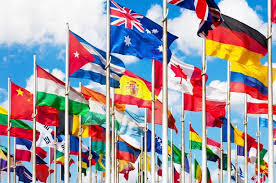The Transformative Power of Arts and Culture in Building Sustainable Cities
The imperative for globally sustainable urban environments is undeniable within the context of our rapidly evolving world. Achieving a more sustainable future necessitates acknowledging the pivotal role of arts and culture in fostering vibrant and resilient urban ecosystems. Integrating arts and culture into urban development transcends mere aesthetics; it serves as a catalyst for economic growth, social harmony, and environmental stewardship. This article examines the multifaceted contributions of arts and culture to the creation of thriving, sustainable cities, drawing upon relevant theories and models from urban planning, sociology, and economics.
Economic and Social Dimensions of Cultural Vibrancy
The arts and culture sector constitutes a robust economic engine, as evidenced by the principles of creative industries economics. Museums, theaters, and cultural institutions attract tourists, generating substantial revenue through cultural tourism and stimulating local economies. This economic impact, analyzed through input-output models, demonstrates a multiplier effect, supporting local businesses and creating a diverse job market. Moreover, social capital theory highlights the role of arts and culture in fostering social cohesion. Cultural events and shared experiences facilitate the development of strong social networks, strengthening community bonds and promoting a sense of belonging among diverse populations. This resonates with the concept of place attachment, where cultural identity is linked to a sense of place and belonging.
Environmental and Educational Contributions
The integration of arts and culture into urban planning significantly contributes to environmental sustainability. Applying principles of sustainable urban design, public art installations can raise awareness of environmental issues and inspire eco-conscious practices. Moreover, cultural initiatives can transform underutilized spaces into green areas or community gardens, enhancing urban biodiversity and mitigating carbon footprints. This reflects the application of the ecological footprint concept, minimizing the environmental impact of urban development. Furthermore, arts education is crucial for cultivating creativity, critical thinking, and problem-solving abilities, as espoused by constructivist learning theories. Investing in arts programs equips citizens, particularly young people, with essential skills for sustainable urban development.
Urban Revitalization, Tourism, and Global Impact
Creative placemaking initiatives leverage the power of arts and culture to revitalize neglected urban areas, aligning with the principles of urban regeneration. Street art projects and repurposed buildings transform communities, attracting residents and visitors alike, and boosting property values. Applying the principles of destination branding, investing in arts and culture positions cities as attractive tourist destinations, enhancing their global image and generating significant economic benefits. Furthermore, cultural diplomacy theories illuminate the role of arts and culture in fostering cross-cultural understanding and international cooperation. Cultural exchanges and partnerships break down barriers, promote mutual respect, and contribute to a more interconnected world.
Resilience, Innovation, and Legacy
Arts and culture contribute to building resilient and adaptable cities. Traditional knowledge embedded within cultural practices often contains valuable lessons in sustainable resource management. Integrating these practices into urban planning allows cities to learn from the past and develop innovative strategies for a more sustainable future. This aligns with the concept of adaptive capacity, allowing cities to respond to future challenges. Moreover, the creative sector serves as a hotbed for social innovation, with artists and entrepreneurs developing creative solutions to environmental and social problems. Supporting this sector unlocks a wealth of innovative ideas, driving social change and contributing to sustainable development goals. Finally, investing in arts and culture creates a lasting legacy for future generations, ensuring the long-term well-being and prosperity of urban communities.
Conclusion and Recommendations
In conclusion, the integration of arts and culture into urban development offers substantial benefits across economic, social, environmental, and global dimensions. A comprehensive approach, incorporating principles from diverse fields like urban planning, economics, and sociology, is essential to fully realize the transformative potential of arts and culture. Future research should focus on developing quantitative models to measure the economic and social impact of arts and culture initiatives more precisely and explore the specific mechanisms through which arts-based interventions contribute to increased resilience in urban settings. This multi-disciplinary approach will refine strategies for integrating arts and culture into urban planning, ensuring the creation of sustainable and vibrant cities capable of adapting to the challenges of the 21st century.
Reader Pool: Considering the multifaceted benefits outlined, what innovative strategies could be implemented to further integrate arts and culture into urban planning processes, ensuring equitable access and meaningful community participation?



